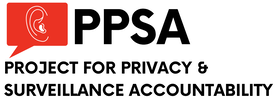|
Do Fourth Amendment rights against unreasonable searches and seizures apply at the border? Or is the border zone of airports and other ports of entry a kind of legal no-man’s land?
These questions arise from two growing trends at the border. One is the announced rollout of facial recognition technology and other biometric surveillance by Customs and Border Patrol of every non-citizen who arrives at a U.S. airport – a practice the Transportation Security Administration is experimenting with for U.S. citizens. The other is the existing practice of accessing the contents of returning citizens’ cellphones, laptops and other electronic devices. Your Passcode, Please Regarding the latter trend, Americans are learning that our personal information is not protected by the Fourth Amendment at the border. In 2017, Sidd Bikkannavar, an employee of NASA’s Jet Propulsion Laboratory, was returning to George W. Bush Intercontinental Airport in Houston when he was detained by Customs and Border Patrol agents. He was told he could not leave until he gave CBP agents his access PIN to his phone. Bikkannavar was deeply concerned because the phone in his possession belonged to NASA – a claim validated by a JPL barcode on the back. The device contained information that JPL was adamant not be copied or shared. CBP insists that it cannot compel someone to unlock their phone, but many like Bikkannavar report that the alternative is to live in the airport. Such searches can be done with a surface examination of the contents – such as an eyeball scan of the files on a computer’s desktop screen. They can also be “forensic” examinations, in which a thumbdrive is plugged into device in order to perform a deep scan of its contents. In an ACLU petition with the Electronic Frontier Foundation, now before the U.S. Supreme Court (Merchant v. Mayorkas), 11 U.S. citizens are suing over having their electronic devices examined at the border without a warrant or reasonable suspicion. Plaintiffs include a military veteran, journalists, an artist and a business owner, as well as Sidd Bikkannavar. Several of them are Muslims and people of color. In an earlier version of this case, a federal district court had ruled that a reasonable suspicion was needed to manually or forensically examine a device. The U.S. Court of Appeals for the First Circuit overturned that ruling. But lower courts have held that forensic searches of electronic devices require reasonable suspicion of a crime. Will the Supreme Court resolve these contradictions? Your Face on File CBP is also proposing to collect and store facial surveillance of non-citizens at every point of entry into the United States. TSA is conducting tests with volunteers for this technology at Washington’s Reagan National Airport, including U.S. citizens. The stated intent is to shorten lines. Despite this technology’s convenience, however, facial recognition has the sinister aspect of subjecting people to continuing surveillance. Targets can be tracked by hidden security cameras or covertly operated cellphones without their knowledge, much less permission. ACLU writes: “Once government acquires a person’s faceprint, it creates a risk of a unique and unprecedented form of persistent surveillance, one that allows the government to identify and track people without their knowledge.” Given the high false-positive rate of facial recognition technology for people of color – witness the ordeal of Robert Williams of Detroit, who was arrested after a false positive – and the fact that DHS plans to hold individual’s facial data for 75 years, it is easy see how this technology could lead to abuses. It is also easy to imagine how TSA’s experiment could lead to the use of this technology to surveil U.S. citizens and create a database of American faces. All of these issues point to the need for clarity: Does the Fourth Amendment apply at the border or not? The U.S. Supreme Court has ruled that “the Fourth Amendment’s balance of reasonableness is qualitatively different at the international border than in the interior.” But different how? The arrival of powerful and intrusive technology should persuade the Supreme Court to at least consider where to draw the lines. Comments are closed.
|
Categories
All
|


 RSS Feed
RSS Feed